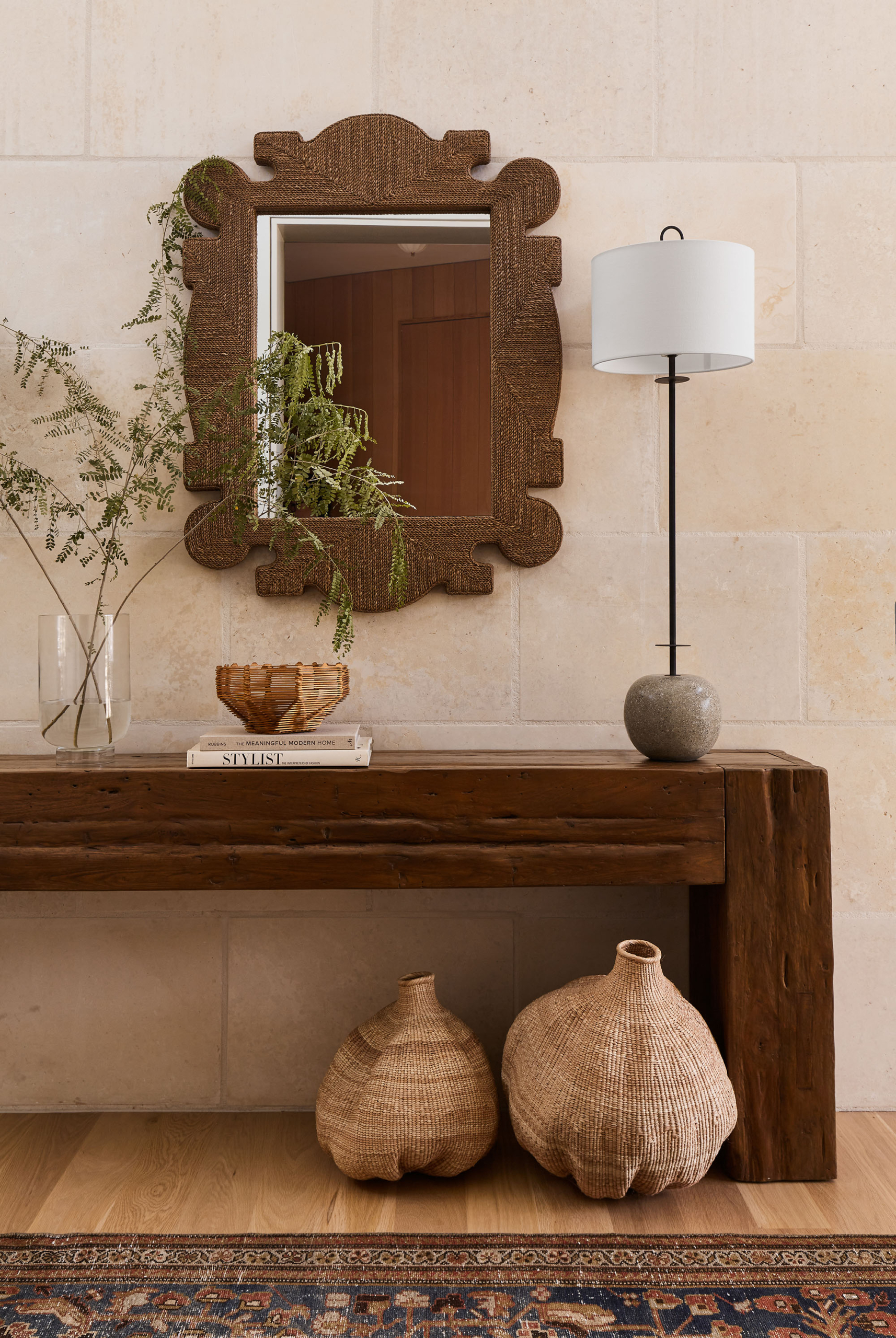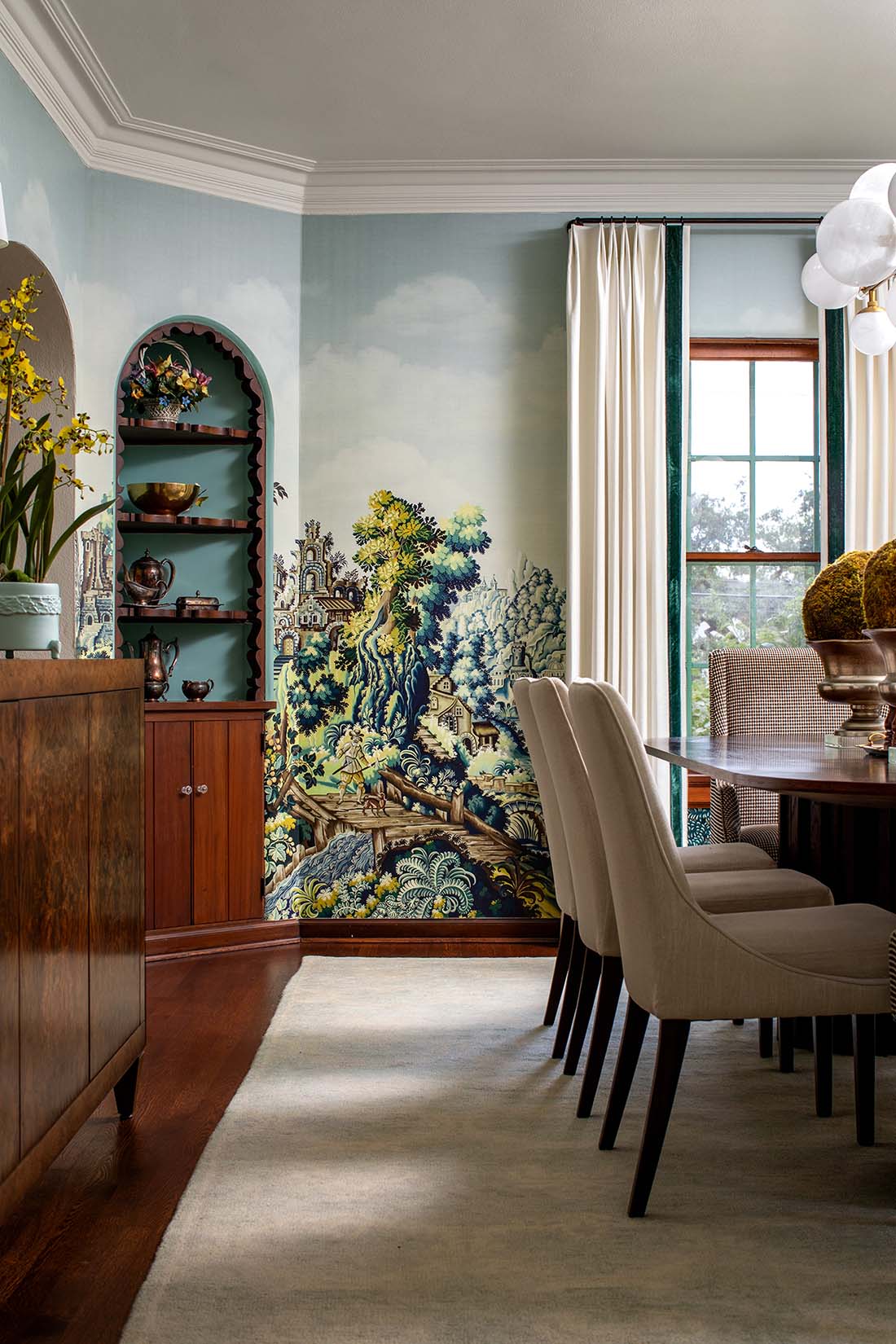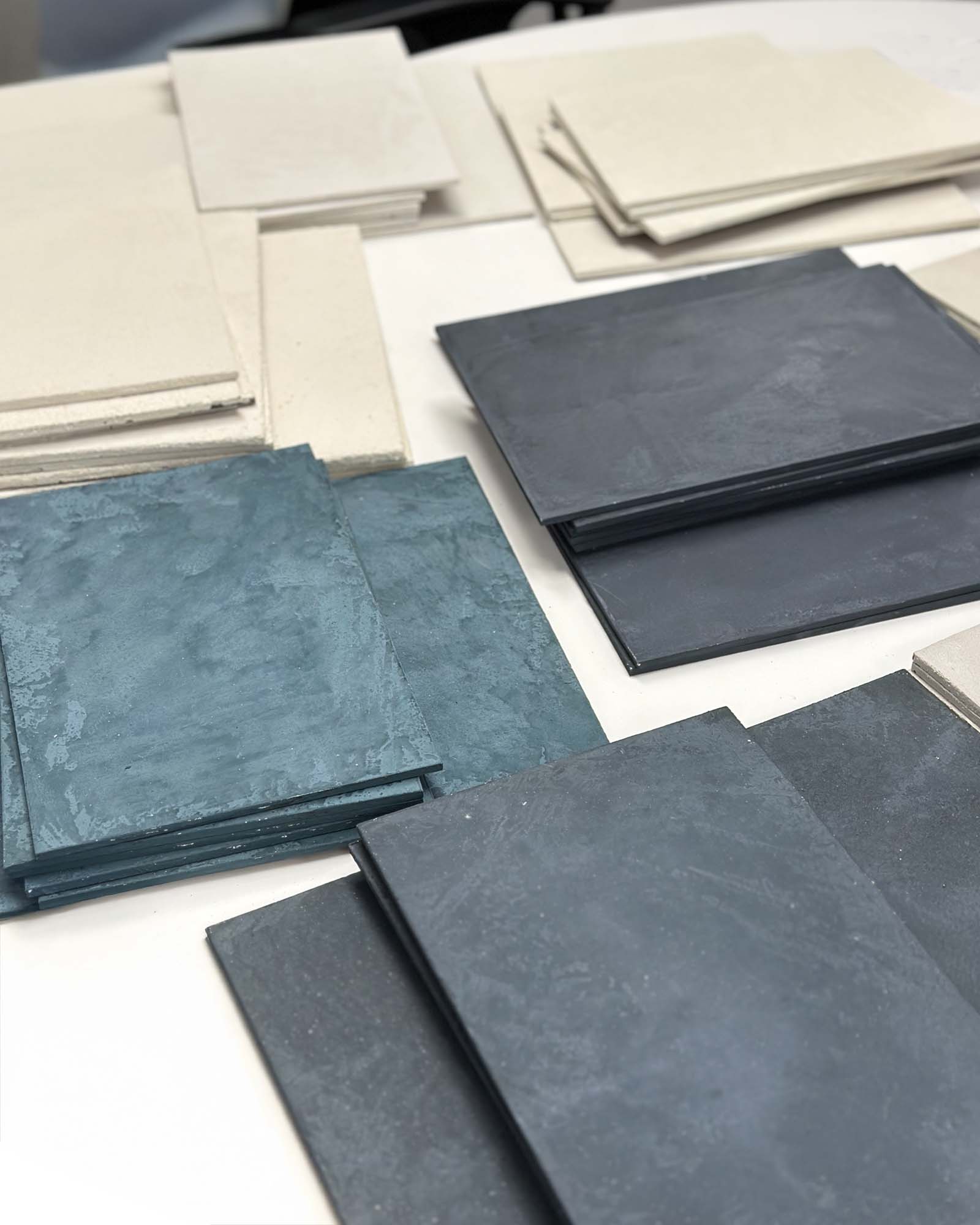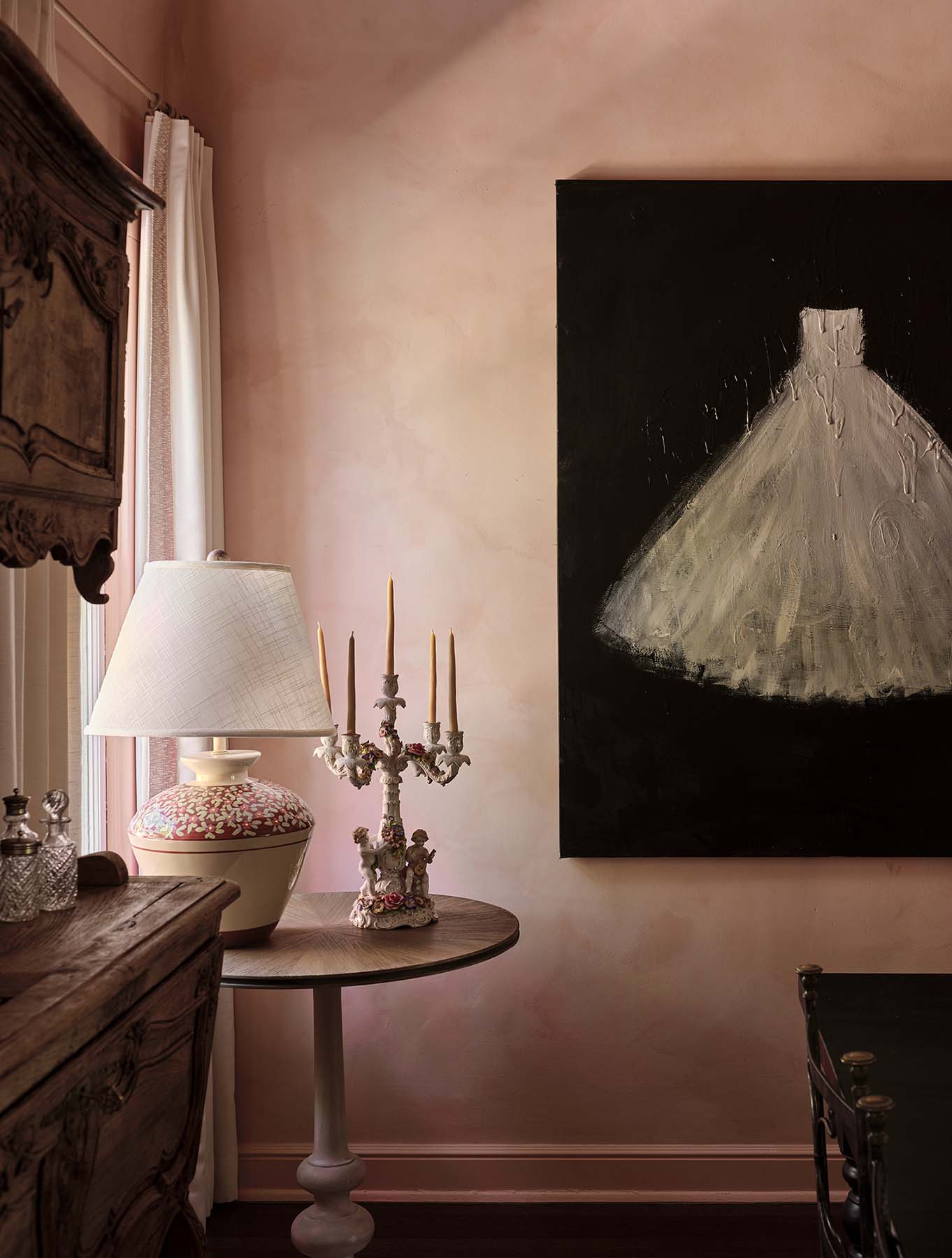If you think of Tuscan interior design as dark, heavy, and overly ornate, you may be picturing the Tuscan trend we all saw in the 1990’s and early 2000s. We remember those days! Interiors of the time overdid the earth tones and felt depressing and cave-like. After over a decade of darkness, a lot of us hit the reset button by swinging to all-white interiors or “modern farmhouse” style, as a way to make our homes feel light, bright and cheerful.
Do today’s earth tones mean a return to Tuscan style?

Earth tones are back now, but not in the same heavy way as before. We wrote about updating a Tuscan brown home back in 2017, but our focus then was on curating your home’s decor and getting rid of all the outdated items that scream “Texas Tuscan” (and not in a good way). With warm tones coming back, we wanted to talk about not just decor, but the overall design of your space.
Today, modern Tuscan interior design is fresher but still cozy, without feeling heavy. Colors are more sophisticated. Everything from furniture to window coverings is more streamlined. In this guide, we’ll look at “then and now”, exploring how updated Tuscan design differs from its traditional counterpart. You can bring this beautiful aesthetic into your home, without reverting to the “brown phase” of the past. But first, a little bit about why the pendulum is swinging . . . again.
Design Whiplash
Ever since the 1950’s, interior design has seesawed between design extremes, some better than others. They certainly didn’t feel like extremes at the time, but trends were so starkly defined that the average homeowner, who didn’t have the skills or training of a professional interior designer, relied on mass-market goods to decorate. What was in the stores, ended up in our homes. Which really limited your style choices as a homeowner.
Here’s a brief list of the interior design pendulum swings that emerged after WWII:
- The 1950’s – Mid-century Modern
- 1960’s and 70’s – Geometric patterns and shag carpets
- 1980’s – Jewel tones and glamour
- 1990’s and early 2000’s – Texas Tuscan
- 2010’s – Modern Farmhouse, plus whites and grays
- 2020’s – Individuality, maximalism, and the return of earth tones
1950’s – Mid-Century Modern
“Mid Mod” featured sculptural furniture that was sleek and emphasized form, with much less pattern than was previously seen, new materials choices like plastic or bent plywood, and plenty of white. Do an online search for “mid-century modern” today and you’ll see this popular label slapped on so much bastardized design that, unless you’re well-versed in this style, you’ll think that a natural wood farmhouse table with a raw edge really is “mid mod”. Don’t be fooled! Mid-mod furnishings bring fresh air to most interiors and are frequently used in “eclectic” style because, in moderation, they go with almost everything. But it’s rare to find an entirely mid-mod home today.
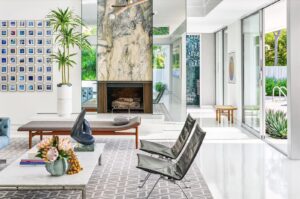
1960’s and 70’s – Geometric patterns and lush textures
This era saw the return of pattern in a big way, with warm, saturated colors you wouldn’t have seen in interiors before (orange, avocado green) and plenty of texture (remember shag carpets?). Clearly a reaction to the minimalism of mid-mod design.

1980’s – Gold, jewel tones, and faux glamour
The 80’s brought a toning down of 70’s excesses, but now moving toward glamour and opulence. Unfortunately, the 80’s were not a high point for interior design. Attempts to “decorate rich” meant we saw a lot of gold or lacquered brass, decorative Greek columns built into ordinary tract homes, and lots of cheap imitations of what people thought wealth looked like. So many things scream “1980’s” to us now that the list of examples would be too long. Jewel tones? Frilly floral fabrics? Wallpaper borders? You can thank the 80’s.

1990’s and early 2000’s – Tuscan interior design
Okay, now we’re getting to what I call the more “straitjacket” trends, where it was almost impossible to break out of one ubiquitous look. With the 1990’s, “Tuscan” was born. (Ironically, few actual homes in Tuscany looked like this.) We’ll go into more below, but Tuscan-inspired interior design meant a color palette almost entirely limited to medium-to-dark browns and earth tones. Ornamentation consisted of items that were easy to mass produce, like wrought iron curlicues or leather furnishings with nailhead trim. Because this look was everywhere, it was easy to comply. When all offerings in the furniture and decor stores looked the same, you knew your home would look cohesive and on-trend by default.

2010’s – Modern Farmhouse
Three huge trends hit here: gray, white, and “modern farmhouse”. These were all pendulum swings away from heavy, dark Tuscan interior design. Walls and flooring were white or pale gray, out went the heavy drapes, and all those wrought iron flourishes morphed into straight-line wrought iron light fixtures or pieces of salvage iron fencing you could hang on your wall. We have HGTV’s “Fixer Upper” and Joanna Gaines to thank for this new ubiquitous look – shiplap walls, old baskets, salvaged wood tables, and a complete lack of artwork – check out old episodes of the show and you’ll see large vintage-looking clocks, metal pieces, or plant shelves on walls, but nary a painting or print in sight. Colors were almost exclusively off-white and sage green.

Like in the Tuscan phase, this look was easy to manufacture cheaply, and you just couldn’t escape it. It wasn’t all bad . . . painting those awful 1990’s brown or glazed walls in a fresh white was a huge breath of relief, and soft gray was a welcome palate cleanser from heavy earth tones. But just like in the 90’s, we found ourselves in another “straitjacket” trend. Heaven help you if you wanted something different and didn’t have a professional designer as a resource.
Early 2020’s and today – Individual, eclectic style, and the return of earth tones
During the Covid years, we all got sick of cookie-cutter looks. We were confined to our homes so much that we wanted them to reflect our personalities, instead of looking like a common furniture showroom display. “Make your home your own” and the return of maximalism was our attempt to break out of the earlier design straitjackets, and it was much needed and long overdue.
But many people liked the security of knowing their home conformed to a well-defined style. This is secretly why I think “updated Tuscan” and earth tones are coming back. The new modern Tuscan design trend is once again taking us back to a cohesive, unified look. Is that a bad thing? Not if it’s done right. But I suspect we’ll be ditching many of the hallmarks of modern Tuscan design ten years from now. Still, if you love the look, and appreciate the design safety net of knowing just what to buy, then lean into it. Just avoid the traps of the 90’s Tuscan phase! We’ll show you how below.
How to Achieve Modern Tuscan Interior Design

A Shift to a Lighter Color Palette
Then: Traditional Tuscan interiors featured deep, earthy tones, especially browns. Every surface in the home was painted tan, including the ceilings. Cabinets were in stained, heavy-grained oak. Walls were often treated with dark faux finishes or Venetian plaster. Accent colors were burgundy, gold, or a deep forest green.
Now: Modern Tuscan design embraces a lighter, airier color palette. Think elegant neutrals such as soft creams, off-whites and warm beiges, especially on larger surface areas like walls and ceilings. That way deeper tones like greens help make a space feel warm without drowning in a cave-like atmosphere. Rather than “overall tan”, think “overall beige”, or “darker warm tones against lighter warm whites”. Bonus: with a broader range of lights and darks, updated Tuscan interiors actually look like they could be in Italy or Spain.

When tan or brown colors are used, they’re less saturated and more neutral, less red or orange than before. Greens are not so much “forest green” as olive or sage tones. Deep reds or burgundies are much less saturated and intense.

Sleeker, Simpler Furniture
Then: Heavy, oversized leather furniture with intricate wood carvings dominated Tuscan interiors. Pieces often had dark finishes, carved or wrought iron details, and metallic or painted embellishments. Remember nailhead trim? Rolled-arm sofas, heavy bullion fringe, and dark leather dominated the furniture choices of the time.
Now: Updated Tuscan interior design uses furniture with cleaner lines and a more balanced approach to scale. Stained wood is much lighter or sometimes just clear-coated. Wrought iron is used sparingly, if at all. Today’s furniture is less likely to be tufted, and more likely to look contemporary (just in a nice, warm fabric).

More Subtle Wall Treatments

Then: Faux finishes had their heyday, with walls often covered with dark glazes or multiple layers of heavy plaster. The effect could be almost theatrical, as if you were dining in a Mexican or Italian “themed” restaurant.
Now: Modern Tuscan interiors might embrace texture, but much more subtly. Smooth plasters and lime washes offer visual depth and interest without the heaviness. These finishes bring a custom, artisanal vibe, without being too overpowering.
Natural Light and Open Spaces
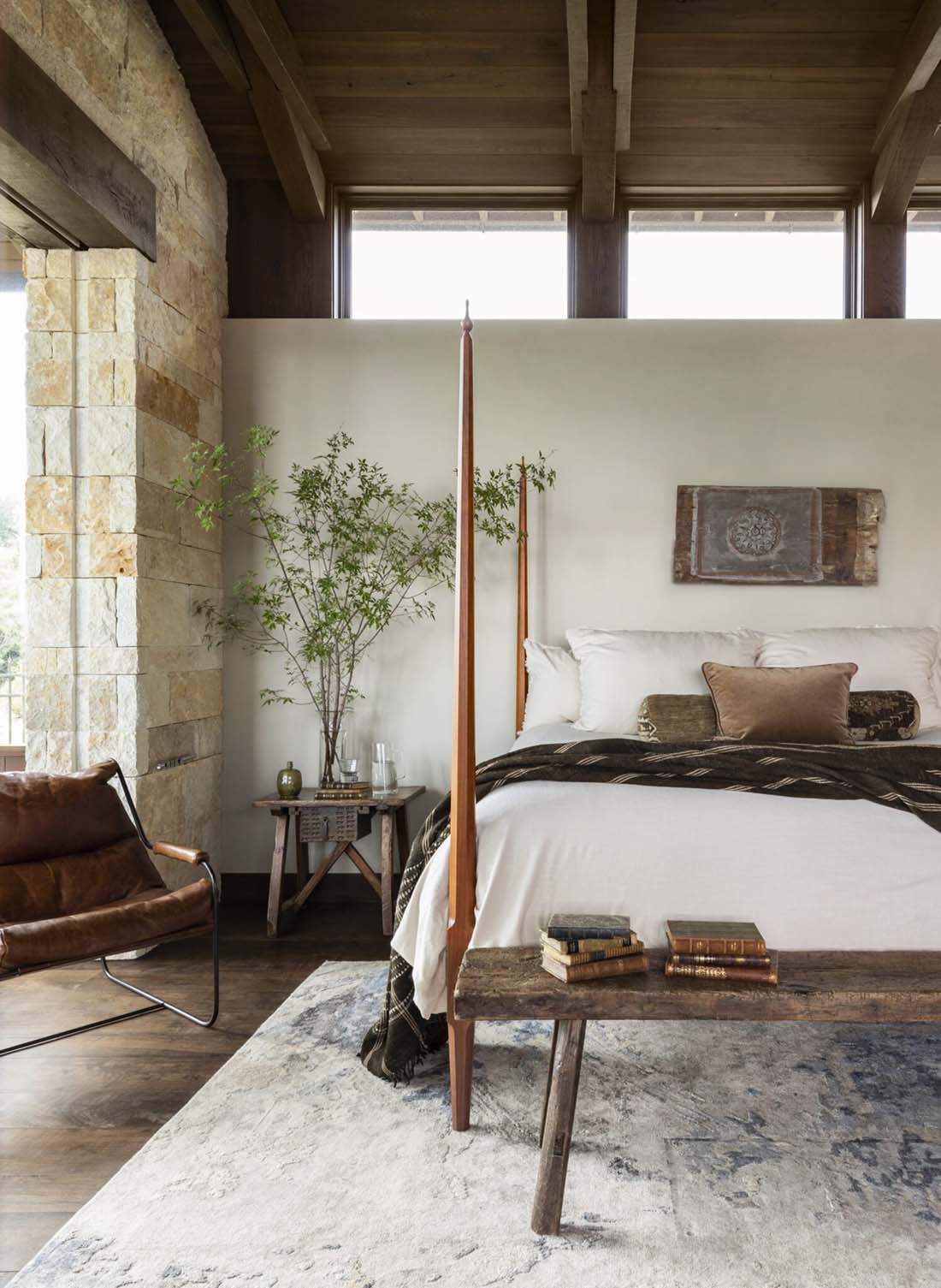
Then: Small, heavily draped windows and dim lighting made rooms feel dark and cozy indeed . . . almost too much so. Thick draperies with valances and ornate trim were typical, as were plantation shutters. These window treatments could sometimes be classic and beautiful, but they blocked a great deal of light from entering the room.
Now: Modern Tuscan homes prioritize natural light with large windows and simple panel drapes, or no window coverings at all. The goal is to create a breezy, sunlit atmosphere rather than a dim, enclosed space. Or if the room has a cozier vibe, minimal (or no) window coverings keep it from feeling claustrophobic.

Simplified Accessories & Decor

Then: Traditional Tuscan decor featured Ornamentation with a capital “O”, including elaborate candlesticks, heavy pottery, and lots of wrought iron accents. Don’t get us started on the burgundy table runners or the fake plants.
Now: The modern Tuscan look embraces a “less is more” philosophy. Accessories are thoughtfully curated — think stacks of books, hand-painted vintage artwork (no outdated prints, please!), handwoven textiles, small sculptures.
Additional Tips for Achieving Modern Tuscan Style
The most important suggestion I have is to ruthlessly keep your home from looking too unified or “cookie cutter”. Avoid giving your guests the idea that you just bought one entire display in a furniture showroom and brought it home. Have enough personal items (quality pieces like a lovely painting or a collection of books) that your home won’t scream “2020’s” ten years from now. Bring in eclectic touches like a sleek, modern light fixture. Keep some elements that look timeless.

Additional tips would be to use natural materials and organic textures. Stone, wood, terracotta, and linen help create an authentic Tuscan feel. Rattan, wool, and soft woven fabrics add depth and warmth. Opt for “warm minimalism”. Keep decor intentional and avoid excessive ornamentation.

And definitely blend old and new. Don’t be afraid to pair antique or vintage-inspired pieces with modern elements for that classic, timeless vibe that will protect your home from screaming “furniture collection”.

Modern Tuscan interior design takes everything we actually did love about traditional Tuscan style — warmth, natural materials, and rustic elegance — but updates it for a lighter, more sophisticated aesthetic. By embracing a neutral color palette that isn’t too overpowering, streamlining furniture choices, and maximizing natural light, you can create a Tuscan-inspired home that feels timeless yet fresh.

